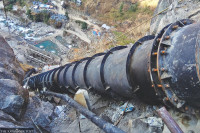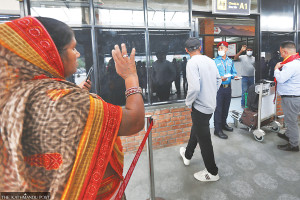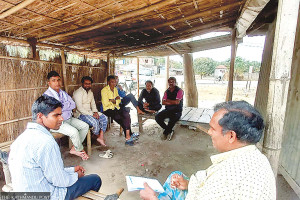 19.12°C Kathmandu
19.12°C KathmanduMoney
Traders: Access to China’s ports not a magic bullet
On Friday, trade experts and freight forwarders welcomed news of the finalisation of the protocol to implement the Nepal-China Transit and Transportation Agreement, but with a little caution.
On Friday, trade experts and freight forwarders welcomed news of the finalisation of the protocol to implement the Nepal-China Transit and Transportation Agreement, but with a little caution.
This agreement will allow Nepali traders and businessmen to use Chinese sea- and land-ports for third-country trade. This new route could facilitate Nepal trading with countries such as Thailand, Laos and Mongolia among others, for they share their border with China.
The agreed-upon protocol is expected to be inked during Chinese President Xi Jinping’s visit to Nepal, expected to take place in 2019.
The protocol has finally come into shape two years after the signing of the Transit and Transportation Agreement. Earlier in 2012, Nepal and China had agreed to open six dedicated land routes—Humla, Korola, Rasuawagadhi, Tatopani, Olangchunggola and Kimangthanka-for trade. Currently, only the Rasuwagahdi-Kerung route is in operation, since 2014.
Rajen Sharma, the former president of Nepal Freight Forwarder’s Association, said that the opening of the new trade-transit route could facilitate Nepal with an additional gateway for trade, which will help ease traffic on the traditional Indian routes that are currently being used.
“However, it is not time yet to consider the new route as an alternative transit route. The commercial viability of the project has to be taken into consideration before its implementation,” Sharma said.
Sharma said the trans-shipment modality has also come in Nepal’s favour, as China has agreed to allow the clearing of Nepal-bound containers at locations near the border. “China will be implementing electronic cargo tracking systems, which means all containers will be electrically monitored. This will make trans-shipment easy and effective,” said Sharma.
As per the bilateral agreement, the Nepali side will provide the list of goods and the electronic bills of transported items to the Chinese side before the transportation of import or export good is carried out.
As of now, Nepal is using the transit routes of Kokata/Haldiya or Vishakhapatnam in India for third-country trade. The nearest Kolkata port is about 700 km far from Nepal. And although Nepal has signed a similar agreement with Bangladesh, back in 1976, Nepal has hardly been able to utilise the Bangladeshi seaports due to various reasons.
With the agreement in place, China has also agreed to let Nepal use Tianjin, Shenzhen, Lianyungang and Zhanjiang seaports and Lanzhou, Lhasa and Xigatse dry ports for trading with third countries.
The nearest port in Tianjin, which is said to be the nearest point from Nepal, is 2,100 km away.
Sharma stressed on the need to analyse the cost to materialise the new transit point. He has sought to work in collaboration with the government to assess the entire trading costs, including the costs for procedure, cargo handling, shipping charge, and other related hassles.
Former Commerce Secretary Purushottam Ojha said the agreement has now allowed Nepal to diversify its transit corridor. Ojha however suspected the commercial viability of the newly-opened trade routes. “The cost of transporting the consignments, cargo handling and procedural modality should be assessed right away, so that we can reap economic benefits soon,” Ojha opined.



















